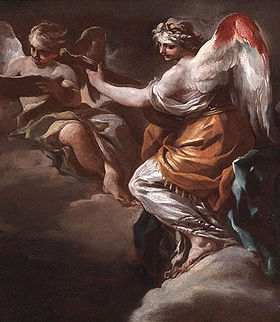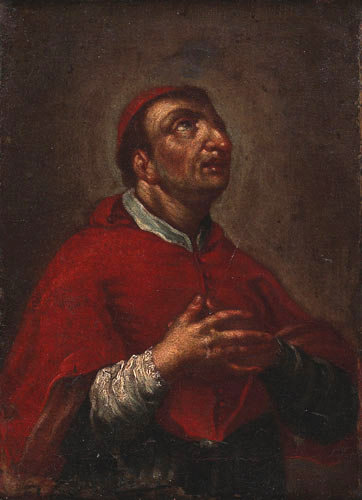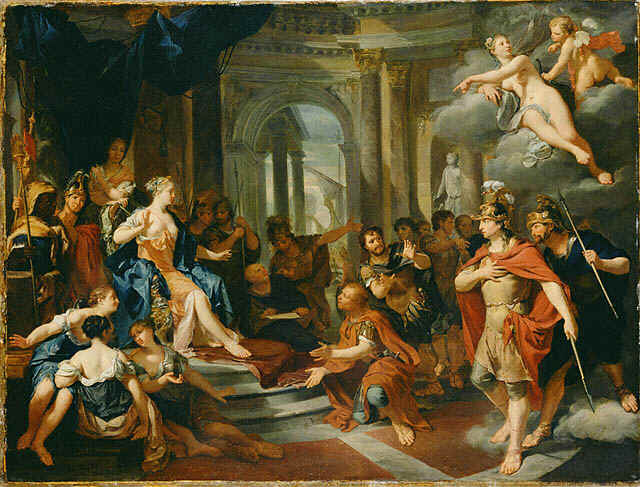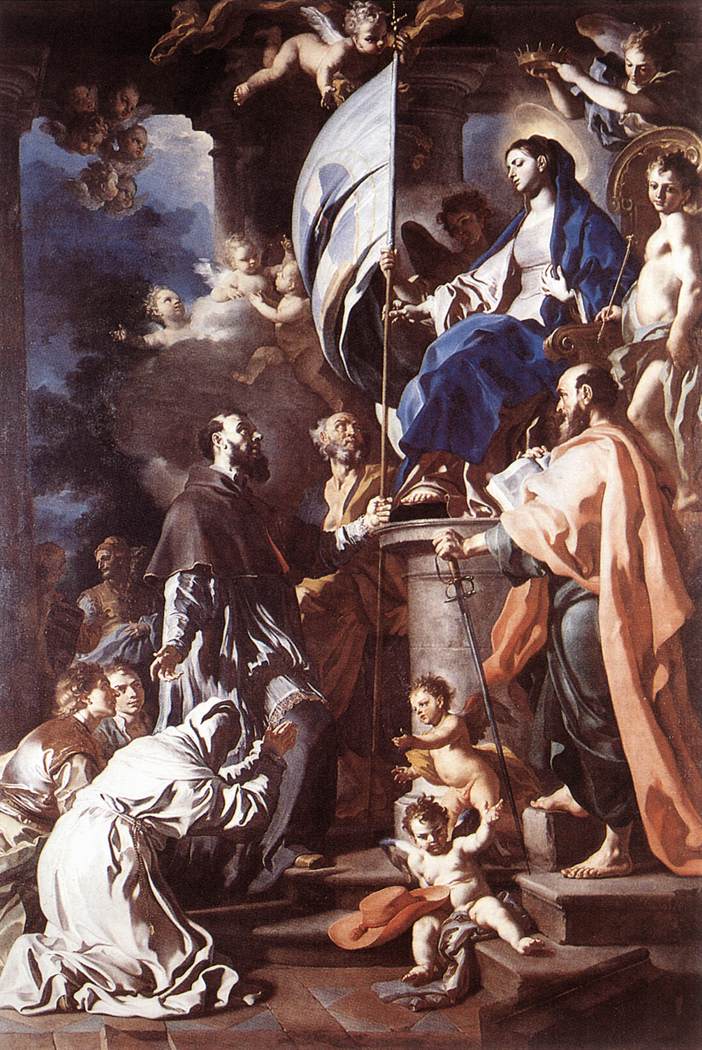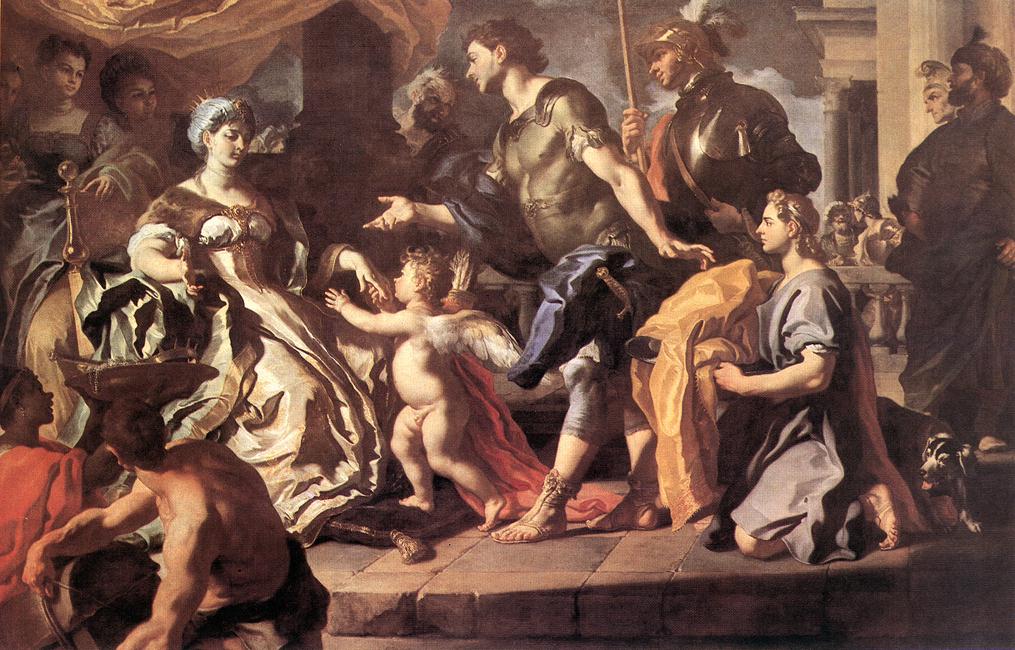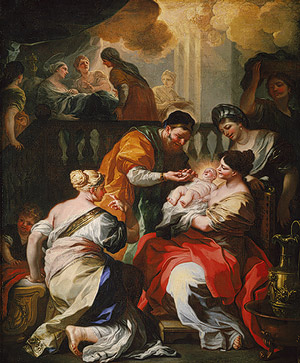<Back to Index>
- Mathematician Louis Francois Antoine Arbogast, 1759
- Painter Francesco Solimena, 1657
- Federal Chancellor of Austria Engelbert Dollfuss, 1892
PAGE SPONSOR
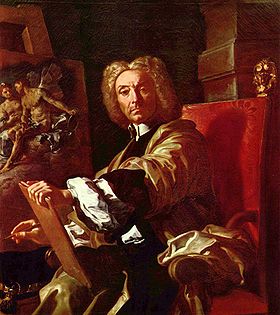
Francesco Solimena (October 4, 1657 – April 3, 1747) was a prolific Italian painter of the Baroque era, one of an established family of painters and draughtsmen.
Francesco Solimena was born in Canale di Serino, near Avellino. He received early training from his father, Angelo Solimena, with whom he executed a Paradise for the cathedral of Nocera (place where he spend a big part of his life) and a Vision of St. Cyril of Alexandria for the church of San Domenico at Solofra.
He settled in Naples in 1674, there he worked in the studio of Francesco di Maria and later Giacomo del Po.
He apparently had taken the clerical orders, but was patronized early
on, and encouraged to become an artist by Cardinal Vincenzo Orsini
(later Pope Benedict XIII).
By the 1680s, he had independent fresco commissions, and his active
studio came to dominate Neapolitan painting from the 1690s through the
first four decades of the 18th century. He modeled his art — for he was a
highly conventional painter — after the Roman Baroque masters, Luca Giordano and Giovanni Lanfranco, and Mattia Preti,
whose technique of warm brownish shadowing Solimena emulated. Solimena
painted many frescoes in Naples, altarpieces, celebrations of weddings
and courtly occasions, mythological subjects, characteristically chosen
for their theatrical drama, and portraits. His settings are suggested
with a few details — steps, archways, balustrades, columns — concentrating
attention on figures and their draperies, caught in pools and shafts of
light. Art historians take pleasure in identifying the models he
imitated or adapted in his compositions. His numerous preparatory
drawings often mix media, combining pen-and-ink, chalk and watercolor
washes. A
typical example of the elaborately constructed allegorical "machines"
of his early mature style, fully employing his mastery of chiaroscuro, is the Allegory of Rule (1690) from the Stroganoff collection, which has come to the State Hermitage Museum, St Petersburg. He
apparently hoped to see his son Orazio follow a career in the law, for
which he received a doctorate (de Domenici), but also became a painter. His large, efficiently structured atelier became a virtual academy, at the heart of cultural life in Naples. Among his many pupils were Francesco de Mura (1696 - 1784) , Giuseppe Bonito (1707 - 89), Pietro Capelli, Scipione Cappella, Gaspare Traversi, and most notably Corrado Giaquinto and Sebastiano Conca. The Scottish portraitist Allan Ramsay spent
three years in Solimena's studio. Solimena amassed a fortune, was made
a baron and lived in sumptuous style founded on his success. Francesco Solimena died at Barra, near Naples, in 1747.
